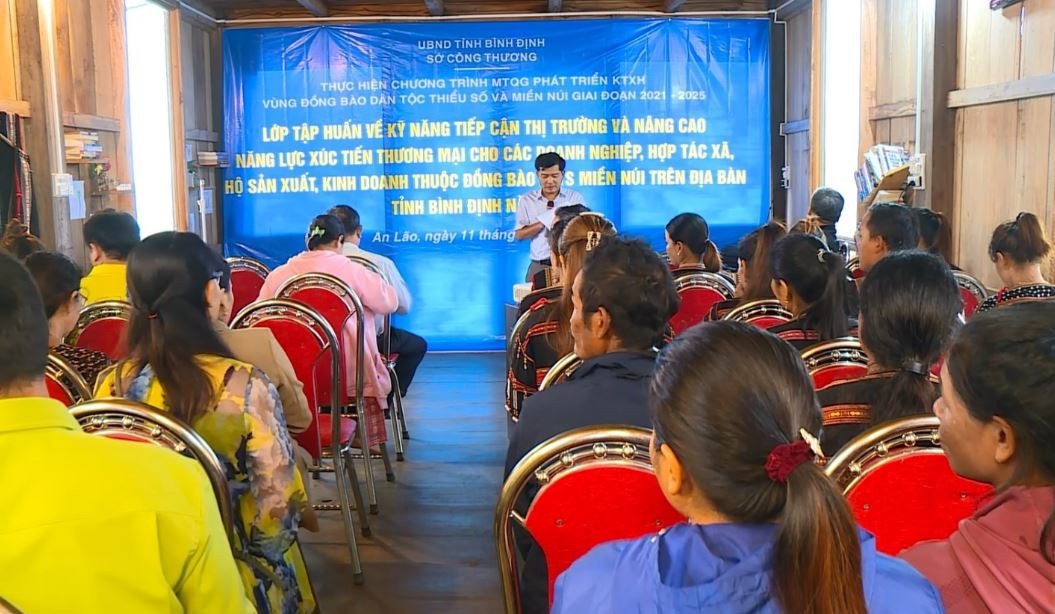
Social-economic development in the rural area is one of the important tasks of the authorities of the central province of Binh Dinh, especially when it has many mountainous districts.
In the period of 2021 - 2025, Binh Dinh authorities plan to allocate nearly 256 billion VND to develop essential infrastructure in the rural and mountainous areas in order to serve production and life in ethnic minority and mountainous areas.
Specifically, An Lao district is allocated with nearly 91 billion VND, Vinh Thanh district with more than 61 billion VND, Van Canh district with over 55 billion VND, Hoai An district with nearly 32 billion VND and Tay Son district with nearly 17 billion VND.
The Department of Industry and Trade of Binh Dinh province recently organized a training class on market access skills and improving trade promotion capacity for businesses, cooperatives, production and business households in the ethnic minorities and mountainous areas of Binh Dinh province. The class was held at the An Toan Agrochemical and General Services Cooperative in An Lao district,
As many as 50 students were taught the following contents: The current market and trade promotion capacity; Market access skills of Vietnamese businesses in general and businesses, cooperatives, production and business households belonging to ethnic minorities and mountainous areas of Vietnam, including Binh Dinh province in particularly. The lecturer is Associate Professor, Dr. Nguyen Quoc Thinh from the Hanoi University of Commerce.
Participating in the training session, ethnic minority trainees gained a lot of knowledge about sales skills, goods distribution, branding and commercial development.
An Lao district, where the training class was held, is one of the three mountainous localities in Binh Dinh with an altitude of about 1,000 meters over sea level. This is the district with the lowest population in Binh Dinh province, with about 32,000 people. This is home to the Hre and Bana ethnic groups.
Recently, An Lao district has built and implemented economic and social development programs in mountainous areas associated with poverty reduction and investment in infrastructure. Hundreds of works to serve people's livelihood were built. Poor households received financial support and agricultural production materials.